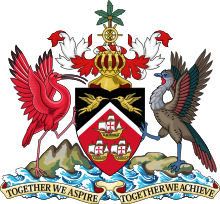User:Cam&Thar/sandbox
Adding Information to Existing Stub
[edit]I will be adding information to the African-Caribbean Leftism page focusing on the culture in the Caribbean specifically Carnival to give the page more information on how freedom from slavery was celebrated, and then became a huge part of Caribbean culture.
Caribbean Culture
[edit]With the racism people in the Caribbean faced, some of it's culture has grown from that in the "new world" sense [1]. Caribbean people are often known as very easy going people, who live a relaxed lifestyle compared to those living in North America. They took pride and found great happiness after fighting for freedom from slavery. Some of the ways they celebrated their freedoms from slavery are still seen today. Below are a few ways Caribbean people still celebrate being freed from slavery, and a taste of Caribbean culture.
Carnival
[edit]
One popular way that being freed from slavery was celebrated was through Carnival, which is still celebrated today in many different forms in countries such as Trinidad and Tobago, Jamaica, Brazil and Guyana just to name a few. The word Carnival was formed from two Latin words: carne, which means flesh and vale, which means farewell [2].
When Carnival first started in the Caribbean by the European Slave traders, as it first started from the Roman Catholic church called the festival of Carne Vale in Europe. The European slave traders would throw rich, beautiful masquerade balls but of course the African slaves were not included in these celebrations. When the African slaves were finally free from slavery, they then took European festival and made it into their own form of celebration to the end of slavery now known as carnival. Carnival was now celebrated in a new way that represented they heritage and culture of the Africans and the Caribbean. Carnival is made up of four main elements: song, music, costume and dance. The music that is played is mostly soca musicand steelpan and the people dance happily in the streets showing their history, hard work and struggle to be where they are today. Carnival is truly an affirmation of survival for the slaves [3].

Trinidad and Tobago is where Carnival is the most well known for Carnival in the Caribbean, and carnival first came to Trinidad during the nineteenth century and continues to develop in the twenty first century and culturally multiples to incorporate Euro-Caribbean-South-Asian-Global. As times change, with different music and new cultures added to the Caribbean, carnival will forever be changing. It its a lot different now than when it first started in the nineteenth century, and will probably be different many years from now. But "No matter how celebratory, Trinidad carnival lives within the shadows of slavery, indentured labor, colonialism, imperialism, and now, globalization." [4].
Sources
[edit]<ref>
- ^ Safa, H. I. (1987). Popular Culture, National Identity, and the Race in the Caribbean. 115-126.
- ^ Rose, M. L. (2015, April 03). Carnival Origins. Retrieved from Carnival in Education: http://www.carnivalineducation.com/node/29
- ^ Rose, M. L. (2015, April 03). Carnival Origins. Retrieved from Carnival in Education: http://www.carnivalineducation.com/node/29
- ^ Riggio, M. C. (2004). Trinidad Carnival Timeline. New York and London: Routledge.
